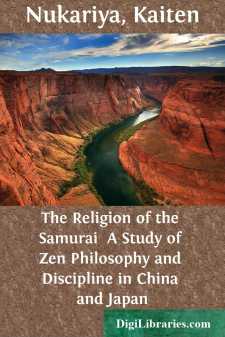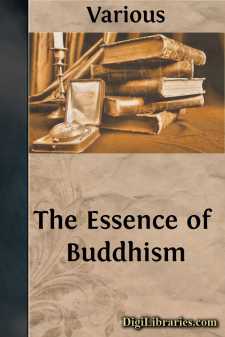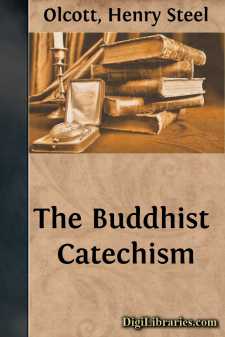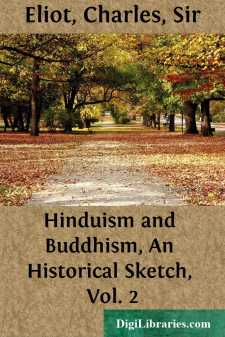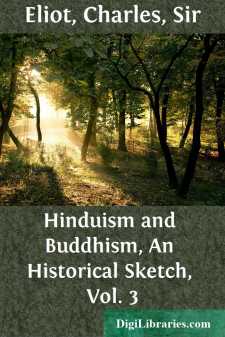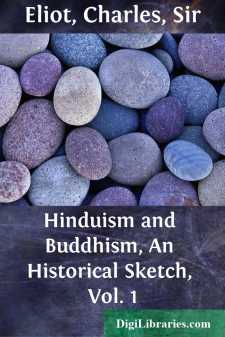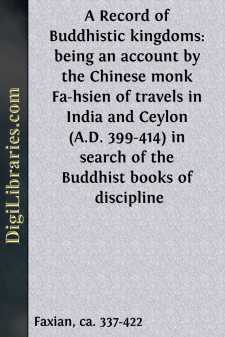Religion
- Agnosticism 2
- Antiquities & Archaeology 21
- Atheism 12
- Biblical Criticism & Interpretation 15
- Biblical Meditations 3
- Biblical Reference 1
- Biblical Studies 11
- Buddhism
- Christian Church 52
- Christian Education 5
- Christian Life 26
- Christianity 60
- Cults 2
- Devotional 6
- Eastern 2
- Education 4
- Eschatology 1
- Ethics 3
- General 60
- Gnosticism 1
- Hinduism 15
- History 28
- Holidays 10
- Inspirational 1
- Islam 8
- Judaism 3
- Leadership 1
- Meditations 3
- Monasticism 1
- Mysticism 11
- Philosophy 4
- Prayer 26
- Prayerbooks 5
- Religion & Science 12
- Sermons 54
- Spirituality 53
- Theism 2
- Theology 17
- Theosophy 15
Buddhism Books
Sort by:
by:
Kaiten Nukariya
Buddhism is geographically divided into two schools[FN#1]—the Southern, the older and simpler, and the Northern, the later and more developed faith. The former, based mainly on the Pali texts[FN#2] is known as Hinayana[FN#3] (small vehicle), or the inferior doctrine; while the latter, based on the various Sanskrit texts,[4] is known as Mahayana (large vehicle), or superior doctrine. The chief tenets...
more...
by:
Various
COMPILER'S PROEM. E. M. BOWDEN. In this compilation no attempt has been made to present a general view of Buddhism as a religious or philosophical system. The aim has rather been to turn Buddhism to account as a moral force by bringing together a selection of its beautiful sentiments, and lofty maxims, and particularly including some of those which inculcate mercy to the lower animals. On this...
more...
THE LIFE OF THE BUDDHA 1. Question. Of what religion[] are you? Answer. The Buddhist. 2. Q. What is Buddhism? A. It is a body of teachings given out by the great personage known as the Buddha. 3. Q. Is "Buddhism" the best name for this teaching? A. No; that is only a western term: the best name for it is Bauddha Dharma. 4. Q. Would you call a person a Buddhist who had merely been born of Buddha...
more...
by:
Charles Eliot
CHAPTER XVI MAIN FEATURES OF THE MAHAYANA The obscurest period in the history of Buddhism is that which follows the reign of Asoka, but the enquirer cannot grope for long in these dark ages without stumbling upon the word Mahayana. This is the name given to a movement which in its various phases may be regarded as a philosophical school, a sect and a church, and though it is not always easy to define...
more...
by:
Charles Eliot
CHAPTER XXXIV EXPANSION OF INDIAN INFLUENCE The subject of this Book is the expansion of Indian influence throughout Eastern Asia and the neighbouring islands. That influence is clear and wide-spread, nay almost universal, and it is with justice that we speak of Further India and the Dutch call their colonies Neerlands Indië. For some early chapters in the story of this expansion the dates and details...
more...
by:
Charles Eliot
INTRODUCTION 1. Influence of Indian Thought in Eastern Asia Probably the first thought which will occur to the reader who is acquainted with the matters treated in this work will be that the subject is too large. A history of Hinduism or Buddhism or even of both within the frontiers of India may be a profitable though arduous task, but to attempt a historical sketch of the two faiths in their whole...
more...
Chapter I. The Twin-Verses 1. All that we are is the result of what we have thought: it is founded on our thoughts, it is made up of our thoughts. If a man speaks or acts with an evil thought, pain follows him, as the wheel follows the foot of the ox that draws the carriage. 2. All that we are is the result of what we have thought: it is founded on our thoughts, it is made up of our thoughts. If a man...
more...
PREFACE Several times during my long residence in Hong Kong I endeavoured to read through the "Narrative of Fa-Hsien;" but though interested with the graphic details of much of the work, its columns bristled so constantly—now with his phonetic representations of Sanskrit words, and now with his substitution for them of their meanings in Chinese characters, and I was, moreover, so much...
more...


